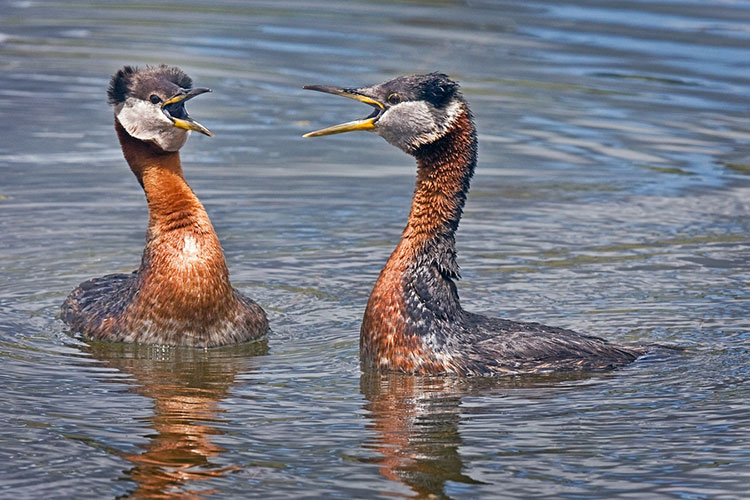Red-necked Grebes are known for the wide variety of elaborate courtship displays they participate in, although these are not as common on the breeding grounds as one might expect given that many pairs have formed prior to reaching breeding areas. Storms can produce waves which destroy many Red-necked Grebe nests and eggs.
Red-necked Grebes are very territorial, not only against other Red-necked Grebes but also against other water birds. A variety of chases and attacks are used, including an underwater attack in which the grebe swims underneath the intruder and jabs its underside with its bill.
When in breeding plumage it is not easily confused with other species. Winter plumage somewhat resembles Earned or Horned Grebe but bill is much larger.
Sexes are similar.
Description of the Red-necked Grebe
BREEDING MALE
The Red-necked Grebe is a large grebe with a yellowish bill, dark gray upperparts, and a white throat and cheeks. The reddish neck and breast in breeding plumage give it its name.
Length: 18 in. Wingspan: 24 in.
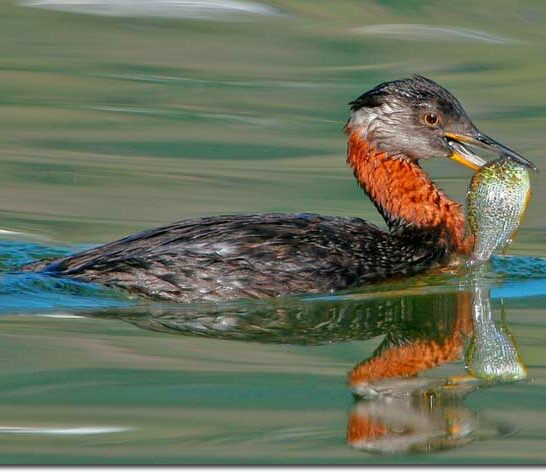
Photograph © Alan Wilson.
Female
Sexes similar.
Seasonal change in appearance
Breast and neck become whitish in the winter.
Juvenile
Juveniles have black and white stripes on the face.
Habitat
Lakes, ponds, and saltwater bays.

Photograph © Glenn Bartley.
Diet
Insects and fish, as well as other aquatic life.
Behavior
Forages from the surface or by diving.
Young will ride on the back of the adults.
Range
Breeds from Alaska to eastern Canada and in parts of the northern U.S. Winters along the east and west coasts. Also occurs in Europe and Asia.
Fun Facts
Red-necked Grebes are very aggressive when on territory during the breeding season, actively chasing away potential rivals.
Great Horned Owls and mink prey on incubating adults.
Vocalizations
“Crick-crick” calls and loud rattling or raspy notes are given on the breeding grounds.
Similar Species
- Not easily confused with other species when in breeding plumage.Faint resemblence to Clark’s and Western Grebes in winter plumage, both have thinner bills, are larger and have red eyes.
Nesting
The nest is a floating platform of plant materials.
Eggs: 4 to 5.
Color: Bluish-white.
Incubation and fledging:
– Young hatch at 20-23 days.
– Young fledge (leave the nest) shortly after hatching but remain with the adults for some time.
Photos
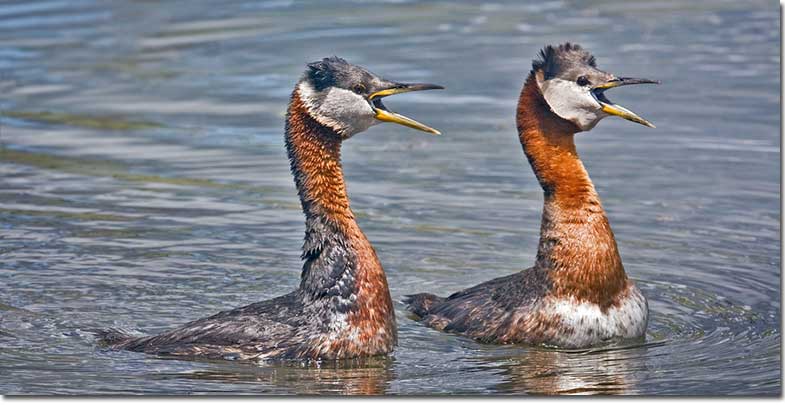
Courtship display. Black crown, black stripe on back of neck extends down to the dark back. White cheek and chin. Red throat and foreneck. Photograph © Elaine Wilson.
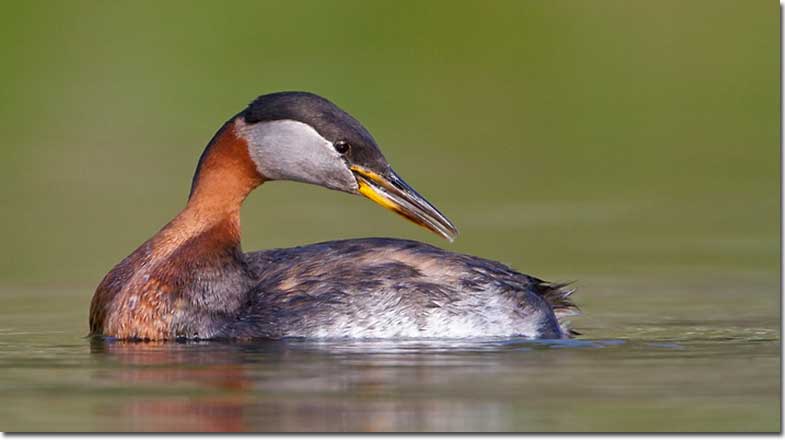
Note the bill color. The amount of yellow on the bill is variable. Typically more yellow on the lower mandible, especially in non-breeding birds. Photograph © Glenn Bartley.
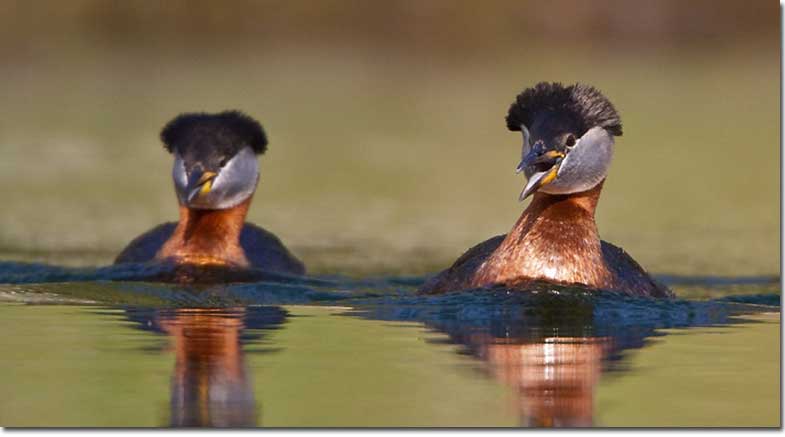
Crest up in courtship display. Photograph © Glenn Bartley.
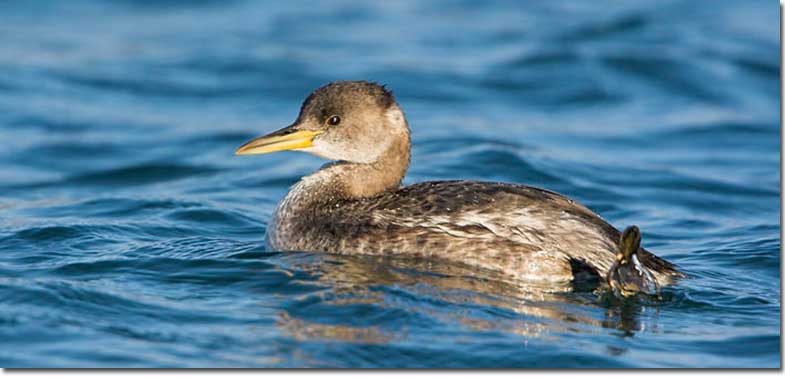
The breast and neck become whitish in the winter. There is less black and more yellow on the bill in non-breeding plumage. Photograph © Glenn Bartley.
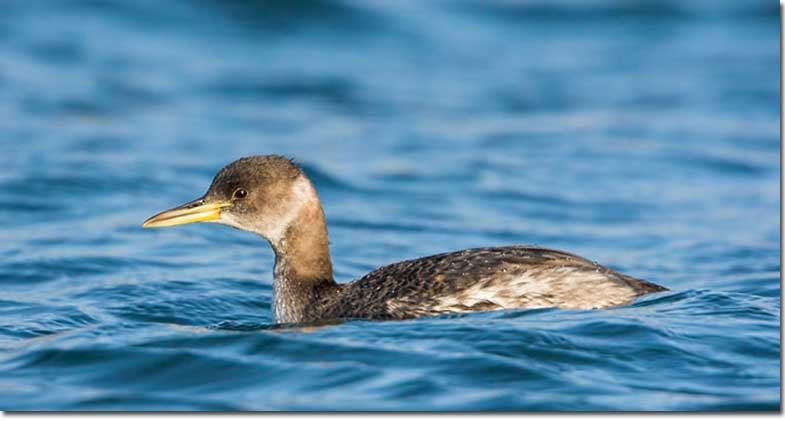
The bill is large and heavy. Photograph © Glenn Bartley.
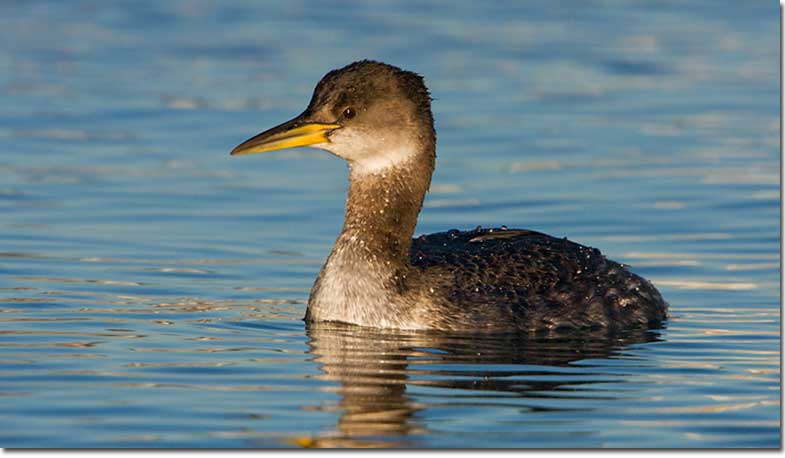
The amount of white on the neck varies. First winter birds have less white on the side of the head while adults will show more white extending to the back of the head and behind the eye. Compare this bird to the one above. Photograph © Glenn Bartley.
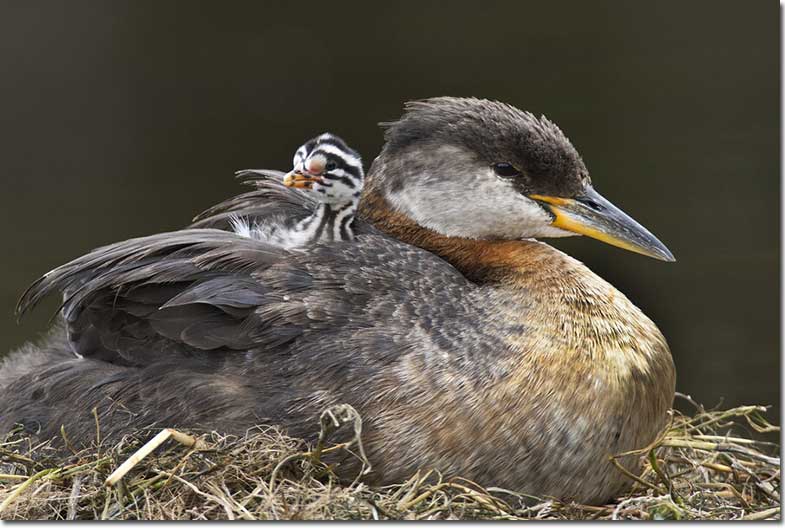
Home-sweet-home. Photograph © Alan Wilson.
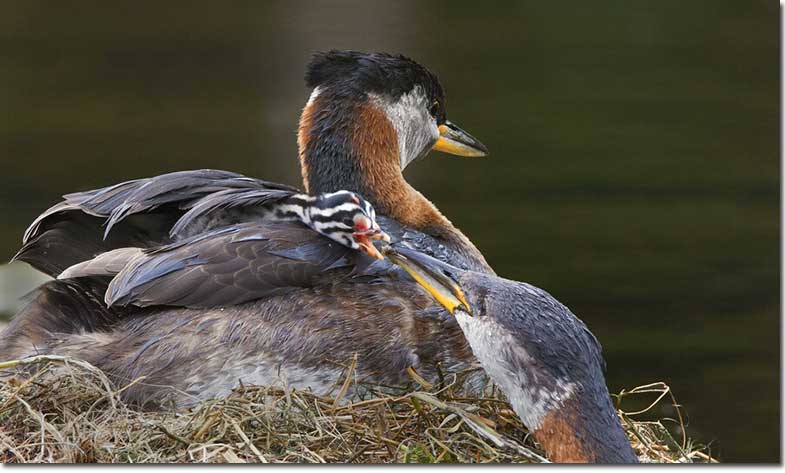
Dinner time. Photograph © Elaine Wilson.
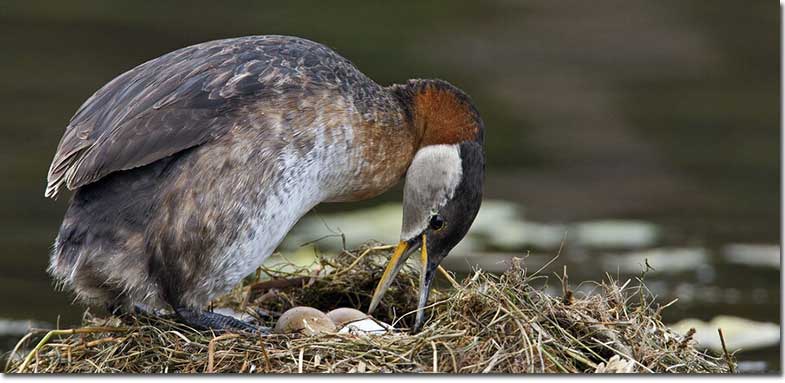
Typical with grebes, legs are well back on the body, great for swimming. Photograph © Alan Wilson.
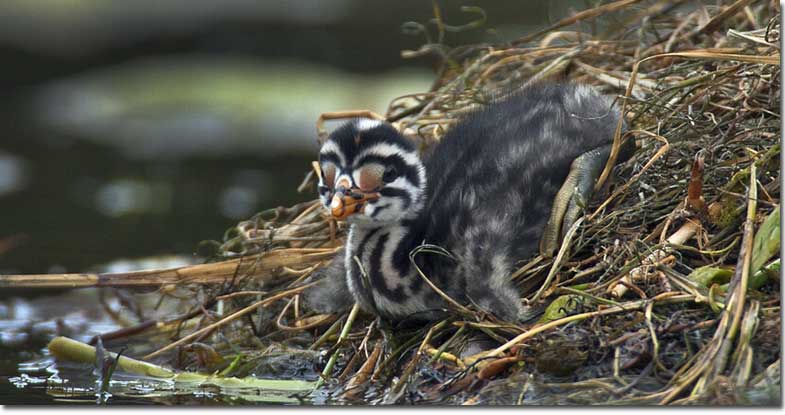
Juveniles have black and white stripes on the face even when older than this alien-looking baby grebe. Photograph © Alan Wilson.

